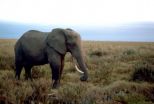INFORMATION:
Also working on this project were Anna K. Coussens, postdoctoral Fellow, Robert J. Wilkinson, professor and Rene Goliath, project coordinator, University of Cape Town; Celeste E. Naude, a registered dietitian and senior researcher, Stellenbosch University; and George Chaplin, senior research associate in anthropology, Penn State.
A John Guggenheim Fellowship; The Stellenbosch Institute for Advanced Study; the Academy of Science of South Africa; South African Sugar Association; UK Medical Research Council; European Union 7th Framework Programme for Research and Technological Development and Wellcome Trust supported this research.
Vitamin D status related to immune response to HIV-1
2015-06-15
(Press-News.org) Vitamin D plays an important part in the human immune response and deficiency can leave individuals less able to fight infections like HIV-1. Now an international team of researchers has found that high-dose vitamin D supplementation can reverse the deficiency and also improve immune response.
"Vitamin D may be a simple, cost-effective intervention, particularly in resource-poor settings, to reduce HIV-1 risk and disease progression," the researchers report in today's (June 15) online issue of Proceedings of the National Academy of Sciences.
The researchers looked at two ethnic groups in Cape Town, South Africa, to see how seasonal differences in exposure to ultraviolet B radiation, dietary vitamin D, genetics, and pigmentation affected vitamin D levels, and whether high-dose supplementation improved deficiencies and the cell's ability to repel HIV-1.
"Cape Town, South Africa, has a seasonal ultraviolet B regime and one of the world's highest rates of HIV-1 infection, peaking in young adults, making it an appropriate location for a longitudinal study like this one," said Nina Jablonski, Evan Pugh Professor of Anthropology, Penn State, who led the research.
One hundred healthy young individuals divided between those of Xhosa ancestry -- whose ancestors migrated from closer to the equator into the Cape area -- and those self-identified as having Cape Mixed ancestry -- a complex admixture of Xhosa, Khoisan, European, South Asian and Indonesian populations -- were recruited for this study. The groups were matched for age and smoking. The Xhosa, whose ancestors came from a place with more ultraviolet B radiation, have the darkest skin pigmentation, while the Khoisan -- the original inhabitants of the Cape -- have adapted to the seasonally changing ultraviolet radiation in the area and are lighter skinned. The Cape Mixed population falls between the Xhosa and Khoisan in skin pigmentation levels.
Cape Town is situated in the southern hemisphere at about the same distance from the equator as the Florida panhandle, slightly more than 30 degrees latitude. Ultraviolet B levels show a winter decline anywhere above 30 degrees latitude, so Cape Town has a definite winter with low levels of the ultraviolet B wavelengths needed to produce precursor vitamin D3. Add to this the fact that people now spend more time indoors during winter and wear more clothing, and exposure to ultraviolet B in winter may be insufficient to prevent vitamin D deficiency.
The researchers note that sunscreen use is not a factor in these populations. However, the darker the skin's pigment, the more ultraviolet B radiation necessary to trigger the precursor chemicals in the body to produce vitamin D.
"The skin of the indigenous people of the Cape, the Khoisan, is considerably lighter than that of either study group and may represent a long-established adaptation to seasonal UVB," according to the researchers. "The darker skin of both study populations -- Xhosia and Cape mixed -- denotes a degree of mismatch between skin pigmentation and environmental UVB resulting from their recent migration into the region."
The researchers found that both groups exhibited vitamin D deficiency during the winter, with women in both groups being more deficient, on average, than the men. Because of vitamin D's impact on the immune system, the researchers provided six weeks of supplemental vitamin D3 to 30 of the Xhosa participants, which brought 77 percent of the participants to optimal vitamin D status.
Jablonski and her team determined that diet, genetics and other variables played very small roles in vitamin D status, although some genetic variations did influence the success of supplementation.
To test how vitamin D status affected the immune system and HIV-1 in particular, the researchers exposed blood samples from Xhosa and Cape mixed participants taken during the summer and winter when the subjects were vitamin D sufficient or deficient. They found that after nine days, the winter blood samples had greater infection than those taken in summer. After six weeks of vitamin D supplementation, the Xhosa blood sample levels of HIV-1 infection were the same as those during the summer.
"High-dosage oral vitamin D3 supplementation attenuated HIV-1 replication, increased circulating white blood cells and reversed winter-associated anemia," the researchers reported. "Vitamin D3 presents a low-cost supplementation to improve HIV-associated immunity."
ELSE PRESS RELEASES FROM THIS DATE:
More dialysis patients living in poor neighborhoods
2015-06-15
MAYWOOD, IL - Poverty is known to be a strong risk factor for end-stage kidney disease. Now, a first of-its-kind study has found that the association between poverty and kidney disease changes over time.
The percentage of adults beginning kidney dialysis who lived in zip codes with high poverty rates increased from 27.4 percent during the 1995-2004 time period to 34 percent in 2005-2010.
The study, by corresponding author Holly Kramer, MD, MPH and colleagues at Loyola University Chicago Stritch School of Medicine, is published in the journal Hemodialysis International.
Researchers ...
Small thunderstorms may add up to massive cyclones on Saturn
2015-06-15
For the last decade, astronomers have observed curious "hotspots" on Saturn's poles. In 2008, NASA's Cassini spacecraft beamed back close-up images of these hotspots, revealing them to be immense cyclones, each as wide as the Earth. Scientists estimate that Saturn's cyclones may whip up 300 mph winds, and likely have been churning for years.
While cyclones on Earth are fueled by the heat and moisture of the oceans, no such bodies of water exist on Saturn. What, then, could be causing such powerful, long-lasting storms?
In a paper published today in the journal Nature ...
New study shows Arctic Ocean rapidly becoming more corrosive to marine species
2015-06-15
New research by NOAA, University of Alaska, and Woods Hole Oceanographic Institution in the journal Oceanography shows that surface waters of the Chukchi and Beaufort seas could reach levels of acidity that threaten the ability of animals to build and maintain their shells by 2030, with the Bering Sea reaching this level of acidity by 2044.
"Our research shows that within 15 years, the chemistry of these waters may no longer be saturated with enough calcium carbonate for a number of animals from tiny sea snails to Alaska King crabs to construct and maintain their shells ...
New honeycomb-inspired design delivers superior protection from impact
2015-06-15
AUSTIN, Texas -- Researchers in the Cockrell School of Engineering at The University of Texas at Austin have developed a groundbreaking new energy-absorbing structure to better withstand blunt and ballistic impact. The technology, called negative stiffness (NS) honeycombs, can be integrated into car bumpers, military and athletic helmets and other protective hardware.
The technology could have major implications for the design and production of future vehicles and military gear to improve safety.
The new NS honeycomb structures are able to provide repeated protection ...
New study finds battlegound state polling worked until 2012 election
2015-06-15
ALEXANDRIA VA, JUNE 15, 2015 - A statistical analysis of poll performance in battleground states over the last three presidential elections shows polling firms produced estimates that were fairly accurate in 2004 and 2008, but underestimated support for President Obama in 2012, a new article reports.
The article's authors--Ole J. Forsberg and Mark E. Payton, professors in the department of statistics at Oklahoma State University--believe the culprit for bad polling in the 2012 election may have roots in "outdated and possibly flawed sampling methodology" that resulted ...
Origins of Red Sea's mysterious 'cannon earthquakes' revealed in new study
2015-06-15
SAN FRANCISCO--For many generations, Bedouin people living in the Abu Dabbab area on the Egyptian Red Sea coast have heard distinct noises--like the rumbling of a quarry blast or cannon shot--accompanying small earthquakes in the region. Now, a new study published in the Bulletin of the Seismological Society of America offers an explanation for this uniquely noisy seismic event.
Seismic activity in the area of the Egyptian seaside resort Abu Dabbab may be caused by an active fault that lays below a 10-kilometer thick block of old, now rigid igneous rock. The surface of ...
Temple researchers look into the brains of chronic itch patients
2015-06-15
(Philadelphia, PA) - It's long been known that scratching evokes a rewarding and pleasurable sensation in patients with chronic itch. Now, researchers in the Department of Dermatology and Temple Itch Center at Temple University School of Medicine (TUSM) may be closer to understanding why.
Using advanced fMRI imaging, the researchers looked at activity in the brain while 10 chronic itch patients and 10 healthy subjects scratched an itch. They found that areas of the brain involved in motor control and reward processing were more activated in chronic itch patients while ...
Bumble bees in the last frontier
2015-06-15
There is little information about bee populations in Alaska, where native bee pollination is critical to the maintenance of subarctic ecosystems. A team from the University of Alaska Fairbanks and the USDA have now completed a two-year study on bumble bees in agricultural areas in the region. The research was published in the Biodiversity Data Journal.
Pollination is one of the most fundamental processes sustaining agricultural production and natural ecosystems. While decrease in bee populations is a common concern, most press coverage has been directed towards Colony ...
New petition seeks to save elephants, end ivory importation in US
2015-06-15
Recent genomic research has prompted a petition that calls for the reclassification of African elephants from one threatened species to two endangered species to protect both from imminent extinction.
The U.S. Fish and Wildlife Service (FSW) has 90 days to respond to a petition from the Center for Biological Diversity at http://www.biologicaldiversity.org, a public interest environmental organization dedicated to the protection of native species and their habitats. The Center requests that the FWS recognize the forest elephant (Loxodonta cyclotis) and savannah elephant ...
Bacteria could help clean groundwater contaminated by uranium ore processing
2015-06-15
A strain of bacteria that "breathes" uranium may hold the key to cleaning up polluted groundwater at sites where uranium ore was processed to make nuclear weapons.
A team of Rutgers University scientists and collaborators discovered the bacteria in soil at an old uranium ore mill in Rifle, Colorado, almost 200 miles west of Denver. The site is one of nine such mills in Colorado used during the heyday of nuclear weapons production.
The research is part of a U.S. Department of Energy program to see if microorganisms can lock up uranium that leached into the soil years ...


